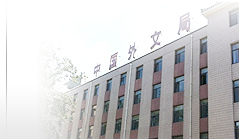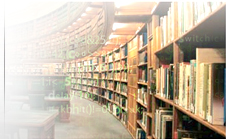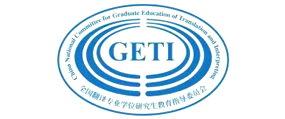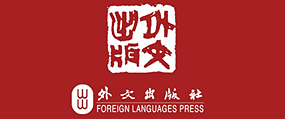中国翻译界60年回眸
探索、建设与发展——新中国翻译研究60年 / 许钧 穆雷 5
外国文学翻译与研究60年 / 陈众议 13
译论研究
翻译信息转换模型的认知心理学研究——基于符号加工范式的思考与构建 / 王柳琪 刘绍龙 20
同声传译中的视译记忆实验研究 / 王建华 25
书刊评介
全球化视野下翻译研究的文化转向——读王宁新著《翻译研究的文化转向》 / 汪沛 31
翻译教学
论本科翻译教学的原则与方法 / 刘和平 34
译技探讨
翻译的诗学变脸 / 杨柳 42
法律英语翻译中的文化因素探析 / 张法连 48
弥补文化喻体意象亏损译法探讨 / 刘法公 52
古籍英译译者选词差异实证研究——以《孙子兵法》英译独特用词为例 / 陈红 李加军 57
译家谈译
文学翻译思维中所指网上的舞蹈——亨利·詹姆斯的代表作《一位女士的画像》译后联想(之一) / 吴可 63
自学之友
·译家译作·
英译汉:Grant and Lee (Excerpt) / / / 刘庆荣 译 68
翻译导读:英语长句的翻译 / 刘庆荣 70
汉译英:鸟的天堂(巴金) / 刘士聪 译 72
翻译导读:关于描写文字的节奏感 / 刘士聪 74
第二十一届韩素音青年翻译奖竞赛揭晓 / 75
第二十一届韩素音青年翻译奖竞赛获奖名单 / 75
第二十一届韩素音青年翻译奖竞赛评审委员会名单 / 76
第二十一届韩素音青年翻译奖竞赛评审工作报告 / 77
第二十一届韩素音青年翻译奖竞赛参考译文及译文评析 / 78
学术争鸣
Service Management Effectiveness何译为佳?/ 张家瑞 90
词语选译
温总理在剑桥大学的演讲摘录 / 91
英文摘要 / 92
本刊2009年总目录 / 94
信息广角 /
本刊邮购信息(24) 本刊稿约(47) 其它(30、62)
中文摘要
探索、建设与发展——新中国翻译研究60年
许钧 南京大学 穆雷 广东外语外贸大学
摘 要:新中国的翻译事业与国家的建设和社会的发展同步前进,翻译研究与翻译学科建设取得了令人瞩目的成就。本文以历史的目光,尽可能全面地回顾并客观地梳理新中国成立以来60年翻译理论研究的发展情况,在此基础上,对翻译研究和翻译学科建设的主要成就进行归纳与总结,继而明确在新的历史时期与多元文化语境中翻译所肩负的历史使命,指出中国译学研究应该着重关注的几个问题,并就今后一个时期如何加强翻译研究和译学建设提出发展思路。
关键词:翻译研究; 译学建设; 探索; 发展
外国文学翻译与研究60年
陈众议 中国社会科学院
摘 要:60年来,我国的外国文学翻译与研究密不可分。没有研究,就不可能有好的翻译;反之,没有翻译,研究便无从谈起。中国外国文学学科的真正建立,是在新中国诞生之后,尤其是在1978年之后。总结和反思不仅有助于厘清学科自身的一些问题,构建以我为主、为我所用的外国文学学派;对于共同推进具有世界影响的中国人文社会科学、建设中国特色的社会主义精神文明也将大有裨益。
关键词:外国文学;翻译研究;60年
翻译信息转换模型的认知心理学研究*——基于符号加工范式的思考与构建
王柳琪 刘绍龙 浙江工业大学
摘 要: 翻译不但是一项语言活动,而且也是一种心理活动。从这个意义上说,翻译上的问题不外乎是译者的心理和所译的文字及其两者间的关系等方面的问题。对翻译信息 转换模型的探索是一项涉及翻译与认知及其两者间关系的交叉性、跨学科研究。本文通过对人类信息转换的认知心理过程和当代认知心理学的经典研究范式——符号 加工范式——的分析和探讨,揭示了翻译与认知的密切关系,并在此基础上构建出翻译信息转换的认知心理学模型。
关键词:翻译;信息转换;认知心理学模型
同声传译中的视译记忆实验研究*
王建华 中国人民大学
摘 要: 本文从解决同传记忆问题入手,通过心理实验的方法,研究了提高同传视译记忆效果的摘要记忆模式。实验研究发现,译员面对不同题材的同传任务时应采用不同的摘要式视译记忆模式:在同传经济类文章时,译员应速记首句+关键词;对于文化类,译员应速记题目+关键词;而对于政治类,译员应速记题目+首句+关键词。
关键词:同传; 视译; 记忆; 摘要模式
论本科翻译教学的原则与方法
刘和平 北京语言大学
摘 要: 论文主要依据认知心理学理论和技能训练特点,对翻译本科教学的定位、目标、原则和教学法进行论述。笔者认为,无论是外语专业的口笔译课程,还是本科翻译专 业课程,都要突出职业特点,充分认识翻译过程培训对翻译技能形成的的重要性,以及阶段性训练对翻译认知自动化形成的影响。本科翻译教学应以翻译思维训练为 主、以文本/讲话体裁和题材为辅、以技能训练和语言提高为双重教学目标,逐渐形成以学生为主、教师为辅、课堂教学为指导、课后练习为重点、充分利用现代网络技术的本科口笔译一体化教学模式,为社会和翻译硕士培训输送合格的翻译人才。
关键词:翻译教学体系;认知特点;技能训练;教学方法
翻译的诗学变脸*
杨柳 南京大学
摘 要: 本 文试图从诗学视角出发来解读翻译的改写活动。通过对《伊利亚特》、《狼图腾》、《天演论》和《牛虻》等译本的分析,揭示不同文化语境下的诗学地位、诗学态 度、经典文学形式和多种意识形态对诗学改写的操纵作用,以及典型的翻译诗学形式在文学、文化和社会的演进过程中所扮演的重要角色。
关键词: 改写;操纵;诗学;文学翻译
法律英语翻译中的文化因素探析*
张法连 中国政法大学
摘 要:语言是文化的组成部分。法律翻译不仅涉及到两种语言,也涉及到两种法律体系、不同的法律文化甚至迥异的法律概念。中外法律文化的差异对法律翻译起着重要的制约作用,法律翻译应是置于法律文化语境之中的翻译。
关键词:法律英语;法律翻译;文化因素
弥补文化喻体意象亏损译法探讨
刘法公 浙江工商大学
摘 要: 隐喻具有丰富的文化喻体意象。隐喻翻译的关键是接通双语文化喻体的意象内涵,使译文读者能够领略原文喻体深邃的文化内涵。隐喻汉英翻译中,文化喻体意象亏 损问题严重,经常导致汉语隐喻的喻体文化寓意无法传递,交际失败。本文提出,把文化喻体意象亏损减少到不妨碍传递基本文化寓意的最低程度,应为隐喻汉英翻 译的基本目标。根据汉语歇后语“喻体”与“解”的隐喻表达原理类似于英语读者理解隐喻文化喻体译文的路径这一观点,本文提出了隐喻汉英翻译新方法:文化喻 体直译 + 内涵“解”译。英语读者借助译文前后两部分能感悟到原文隐喻文化喻体的基本意象。
关键词:文化喻体;意象亏损;新翻译方法
古籍英译译者选词差异实证研究
—以《孙子兵法》英译独特用词为例
陈红 李加军 江苏大学
摘 要:以Lev(1967)在Translation as a Decision Process 所 提出的翻译选择过程为理论基础,本文以两译家对《孙子兵法》英译独特用词为研究对象,对译者选词过程的差异进行实证研究,发现译者选词差异存在于如下六个 方面:文化因素处理、同义词选取、修辞形态、译者变通策略、原作风格、对原作的理解。笔者认为,该实证研究的意义裨益于我们更好地认识古籍翻译所涉及如何 处理语言和文化诸多要素的认识论和方法论,揭示了造成或影响译者选词、表征和风格差异诸原因及微观过程。
关键词:《孙子兵法》英译独特用词;选词差异;译者;原因
Contents
An Information Processing Approach to the Construction of a Cognitive-psychological Model for Understanding the Translational Process / Wang Liuqi & Liu Shaolong / 20
Experiments on Improving Sight-interpretation Memorization for Simultaneous Interpretation / Wang Jianhua / 25
Pedagogical Principles and Methodologies for Teaching Undergraduate Courses in Translation / Liu Heping / 34
Poetic Rewriting in Translation / Yang Liu / 42
Cultural Factors in Legal Translation / Zhang Falian / 48
Making up for Image Losses in C-E Translation of Metaphors / Liu Fagong / 52
Word Choice Differences in Two English Versions of Sun-tzu’s The Art of War and in Translations of Ancient Chinese Classics in General: An Empirical Study Chen Hong & Li Jiajun / 57
E/C Translation Practice: Grant and Lee (Excerpt) / Liu Qingrong / 68
C/E Translation Practice: Birds’ Paradise (Ba Jin) / Liu Shicong / 72
Winners of Han Suyin Award for Young Translators (2009) / 75
English Abstracts of Major Papers in This Issue / 92
General Catalogue 2009 / 94
Abstracts of Major Papers in This Issue
Exploration, Construction and Development: 60 Years of Translation Studies in New China
by Xu Jun (Nanjing University, Nanjing, China) & Mu Lei (Guangdong University of Foreign Studies, Guangzhou, China) p. 5
Abstract: Keeping pace with the development of the country as a whole, translation studies in new China has scored remarkable achievements over the past 60 years in both its theoretical construction and its disciplinary development. This paper offers a historical and comprehensive review of the field’s growth and expansion since the founding of the P.R.C., mapping its current theoretical formation, identifying significant new issues to be addressed, and pointing out directions for its further development in our age of globalization and cultural diversity.
Key words: China; translation studies; disciplinary development; exploration
An Information Processing Approach to the Construction of a Cognitive-psychological Model for Understanding the Translational Process
by Wang Liuqi & Liu Shaolong (Zhejiang University of Technology, Hangzhou, China) p. 20
Abstract: Simultaneously a linguistic and a cognitive activity, translating involves nothing more than the translator’s psychology and its interaction with what is being translated. Taking this basic assumption into account and adopting an information processing approach, this paper looks into the translational psychology and tentatively comes up with a cognitive model for understanding the mechanisms of information processing in translation.
Key words: translation; information transformation; cognitive-psychological model
Experiments on Improving Sight-interpretation Memorization for Simultaneous Interpretation
by Wang Jianhua (Renmin University, Beijing, China) p. 25
Abstract: To find ways for improving memorization in simultaneous interpretation, the author has conducted several psychological experiments on student-interpreters by testing different summarization models for different interpretation texts. The results show that for greater mnemonic efficiency in simultaneous interpretation, different summarization models should be adopted for different types of texts, with “topic sentence + key words” for texts of economy, “title + key words” for texts of culture and “title + topic sentence + key words” for texts of politics.
Key words: simultaneous interpretation; sight interpretation; memorization; summarization; model
Pedagogical Principles and Methodologies for Teaching Undergraduate Courses in Translation
by Liu Heping (Beijing Language and Culture University, Beijing, China) p. 34
Abstract: By drawing from the cognitive psychological theories and the arts of skills training, this paper discusses the principles and the methodologies applicable to undergraduate translation teaching. The author holds that the translation courses (written or oral), both for majors in foreign languages and in translation, should highlight professionalization, and should take into full consideration both the crucial contributions a process-oriented training could make to the formation of translation skills and the significant impact a phase-oriented training could make on fostering the translator’s intuition. Such a course should, moreover, focus on exercises that help the students to acquire a way of thinking befitting translation, attaching secondary importance to acquainting them with texts of various types and subjects. And it should take the training of translation skills and the acquisition of language proficiency as its two main objectives. Only by following the above-mentioned principles can an integrated model be developed for undergraduate translation teaching where the students become the “core” players, equal attention is given to after-class exercises and classroom instructions, and network technologies are applied throughout the teaching process.
Key words: translation; pedagogy; cognitive; skills training; teaching method
Poetic Rewriting in Translation
by Yang Liu ( Nanjing University, Nanjing , China) p. 42
Abstract: A poetic analysis of different versions of Iliad, Wolf Totem, Evolution & Ethics and Other Essays, and The Gadfly shows that since different cultures assign different statuses or have different attitudes to poetic discourse, vary in their ways of canonizing literary forms, and are informed with different ideologies, the rewriting practice in translation is always subject to manipulation by culturally related factors. The translated poetic forms, in return, typically play an important role in the reformation and evolution of literature, culture and society.
Key words: rewriting; manipulation; poetics; literary translation
Cultural Factors in Legal Translation
by Zhang Falian (China University of Political Science and Law, Beijing, China) p. 48
Abstract: Since language is an integral part of culture, legal translation involves not only two languages, but also two legal systems, a variety of legal cultures and different sets of legal concepts. Chinese and foreign legal cultures tend to differ significantly from each other. As such, regulatory constraints are necessarily imposed on the way legal texts are rendered into Chinese or foreign languages, and no legal translation is adequate without being culturally contextualized.
Key words: law; translation; cultural factor; analysis
Making up for Image Losses in C-E Translation of Metaphors
by Liu Fagong (Zhejiang Gongshang University, Hangzhou, China) p. 52
Abstract: As metaphors tend to be full of images in their vehicles, successfully transferring what those images imply culturally holds the key to metaphor translation. In C-E metaphor translation,image losses suffered by the translated vehicles are so serious that the metaphors’ cultural implications often fail to make sense to the target audience. Taking a fresh look at this seemingly insoluble problem, the present paper argues that it could be effectively dealt with if only the translator made a dual move: offering a literal translation of the vehicle concerned first, and then complementing the step with a “reference” translation of its cultural implications. In this way, English readers are offered access both to the original image and to its cultural implications. A comparative study of examples in C-E metaphor translations corrobates the effectiveness of this approach as a means for making up the image losses of culturally charged vehicles.
Key words: metaphor; vehicle; image; translation; culture
Word Choice Differences in Two English Versions of Sun-tzu’s The Art of War and in Translations of Ancient Chinese Classics in General: An Empirical Study
by Chen Hong & Li Jiajun (Jiangsu University, Zhenjiang, China) p. 57
Abstract: Taking for its theoretical underpinning Levy’s conception of translation as a decision-making process, this paper conducts an empirical study on the lexical differences between two English versions of The Art of War. The findings point to six considerations that account for the translators’ differential selection of words: the cultural factors involved, synonyms, figures of speech, flexibility of treatment, perceived style of the original and the different interpretations of its meaning. By revealing the causes that contribute to or influence an individual translator’s word choice and stylistic adjustment, this study is expected to throw much epistemological and methodological light on how various linguistic and cultural factors are handled in the process of translating Chinese classics.
Key words: Sun-tzu; The Art of War; word choice; translator; process of translation















